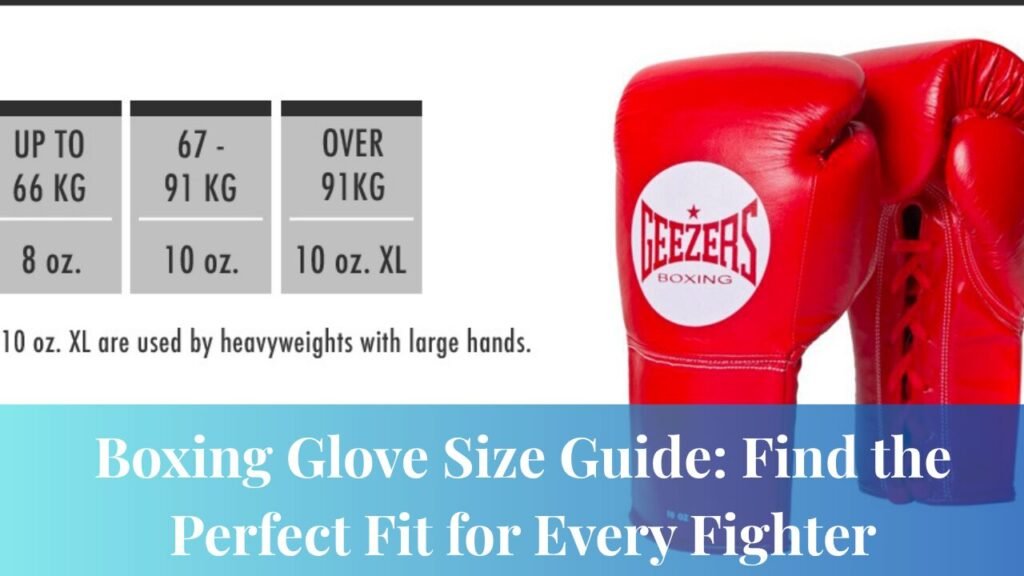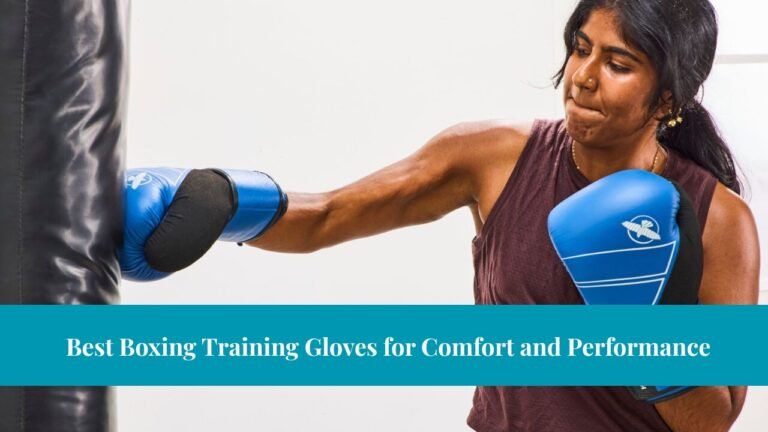Choosing the right boxing gloves is essential for safety, performance, and comfort. Whether you are a beginner, amateur, or professional fighter, understanding how to select the appropriate glove size can make a significant difference in your training and fighting experience. This comprehensive boxing glove size guide will walk you through everything you need to know, from glove weights to sizing charts and use-cases. It also includes real-world tips to help you find your perfect pair.
Why Boxing Glove Size Matters
The size and weight of your boxing gloves impact not only your performance but also your safety. Ill-fitting gloves can lead to wrist injuries, hand strain, or inadequate protection for your sparring partner. Choosing the right glove size offers enhanced wrist and knuckle protection, better technique and control, improved training outcomes, compliance with competition standards, and increased confidence during training and sparring. The right fit also reduces fatigue and improves endurance, allowing fighters to train longer without discomfort or risk.
Understanding Boxing Glove Sizes by Weight (oz)
Boxing gloves are primarily measured by weight in ounces (oz). This weight includes the padding and determines how much protection and impact absorption the gloves provide. For instance, 6–8 oz gloves are competition gloves for youth or professional boxers, while 10 oz gloves are for competitions or smaller hands. Gloves in the 12 oz range are ideal for pad work or light bag training, and 14 oz gloves work well for general training and sparring. A 16 oz glove is best for sparring or heavy training, and 18–20 oz gloves suit large or heavyweight fighters in heavy sparring or conditioning.
Heavier gloves contain more padding and slow down punches, making them ideal for sparring sessions where safety is the priority. Lighter gloves, on the other hand, are better suited for speed and agility in competitions or mitt work.
How to Choose the Right Size Boxing Gloves
The first step is to know your training purpose. Bag work generally requires 10–12 oz gloves for speed and feedback, while pad work benefits from 10–12 oz gloves for accuracy. For sparring, 14–16 oz gloves are preferred for safety, and competitions typically require 8–10 oz gloves to meet regulations.
The second step is to measure your hand circumference. Wrap a measuring tape around your hand just below the knuckles, excluding the thumb. For hands measuring 5.5″–6.5″, gloves between 8–10 oz are suitable. Hands in the 6.5″–7.5″ range fit best with 10–12 oz gloves, 7.5″–8.5″ hands need 14 oz gloves, 8.5″–9.5″ hands work well with 16 oz, and measurements above 9.5″ require 18–20 oz gloves.
Finally, consider your body weight. Those between 100–125 lbs often use 10 oz gloves, 125–150 lbs use 12 oz, 150–180 lbs use 14 oz, and 180–200+ lbs go for 16 oz or more. These are starting points, but it is always important to try gloves on, especially with wraps, to ensure comfort and proper fit.
Different Glove Types Explained
Bag gloves are designed for heavy bag use and have less padding compared to sparring gloves, allowing them to withstand repeated impacts against dense surfaces. Sparring gloves are heavier with more cushioning to protect both the wearer and their partner, typically weighing 14 oz or more. Training gloves are versatile and can be used for drills, mitt work, and light bag workouts, balancing weight and protection. Competition gloves, regulated by boxing federations, are lighter (8–10 oz) with minimal padding for increased speed and impact.
Using the right type of gloves for each activity not only improves performance but also extends the life of your gear. For example, bag gloves for bag work prevent your sparring gloves from wearing out too quickly.
Boxing Glove Fit: Signs of the Right Fit
The ideal fit should feel snug but not overly tight, with no pinching or pressure points around the fingers. The wrist strap should provide firm support, hand wraps should fit comfortably inside, and fingers should align naturally with the glove’s top. If gloves are too loose, they can move around and cause abrasions or poor impact absorption. If they are too tight, they can restrict circulation and reduce flexibility. Always test gloves with your usual hand wraps to get an accurate sense of fit.
Materials and Construction: What to Look For
Leather gloves are extremely durable, mold to your hand over time, and offer better ventilation. Synthetic gloves are more affordable, easier to clean, and suitable for beginners or occasional use. In terms of closure, Velcro straps are convenient for solo training and quick adjustments, while lace-up gloves offer a snug, competition-ready fit but require assistance to put on. Quality gloves also feature multi-layer padding, breathable mesh interiors, and anti-microbial linings for comfort and hygiene.
Real-World Tips from Fighters
Many fighters agree that glove choice influences performance significantly. Amateur boxer James C. says, “I use 16 oz gloves for sparring regardless of size because it helps build arm endurance.” Fitness boxer Maria F. shares, “Switching from 12 oz to 10 oz gloves for bag work really improved my speed and accuracy.” Coach Tasha B. advises, “Always try gloves on with hand wraps. The feeling can change drastically.” Across all experience levels, fighters stress that comfort, purpose, and weight are equally important when selecting gloves.
Glove Sizing for Women and Youth
Women often have smaller hands and wrists, making glove fit crucial to performance and injury prevention. Generally, women use gloves between 10–14 oz depending on the training type, and some brands offer gloves specifically designed for female anatomy. Youth glove sizes vary based on age. Children aged 6–12 often use 6–8 oz gloves, while those aged 12–16 use 10–12 oz gloves. Parents should always ensure youth gloves offer proper wrist support and adequate padding to protect growing bones and muscles.
FAQs
What size boxing gloves should a beginner use?
Most beginners do well with 12 oz or 14 oz gloves for training and bag work.
Can I use the same gloves for sparring and bag work?
Not recommended. Sparring gloves have more padding and are heavier to protect both fighters.
Do glove sizes differ by brand?
Yes. Always check the brand-specific sizing chart before purchasing.
How do I maintain my gloves?
- Air them out after each session
- Use glove deodorizers
- Wipe down with a damp cloth
- Store in a dry, cool place
Are heavier gloves better?
Heavier gloves provide more protection and build endurance, but aren’t suitable for speed training or competition.
What if my gloves don’t fit well?
Return or exchange them. Many retailers offer size guarantees or trial periods.
Conclusion
Choosing the right boxing glove size is more than just picking a number. It’s about understanding your goals, training intensity, and hand measurements. With this boxing glove size guide, you’re now equipped to make an informed decision that prioritizes safety, performance, and comfort.
Before purchasing, consult brand-specific sizing guides and consider talking to a coach or experienced fighter. Invest in more than one pair of gloves if you’re serious about the sport, and never compromise on quality.
Proper glove selection is the first step toward a successful boxing journey. Whether you’re training for fitness or preparing for a bout, the right glove makes all the difference Visit boxing essential to explore more.




